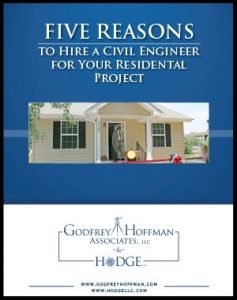
What can Sustainable Development mean to you when it comes to your land planning, use and design?
- 20-40% potential reduction in construction costs
- Significant reduction in maintenance costs over the lifetime of development from roadways to recharging of storm water into the ground better, faster, cleaner
- Re-use of existing materials where possible
At Godfrey-Hoffman & Hodge, we produce site designs that comply with all the local, state and federal regulations …however we believe it is important to go above and beyond just what is required and design a site which will serve our clients well into the future. Otherwise known as sustainable development.
Our Practices
We incorporate best management practices, BMPs into all our site designs to ensure the developments meet the standards of the Connecticut Water Quality Manual, the CT Guidelines for Sediment and Erosion Control as well as the requirements of the local municipality. GHH takes pride in being at the forefront of the Low Impact Development, LID movement. The LID philosophy represents a change from the standard site development practices of the past 50 years. Simply put LID believes “Less is More”. Not only does the implementation of LID act to create a design which is environmentally sensitive it is considerably more cost effective to standard development. Sites with LID features see approximately a 20-40% reduction in construction costs as well as a significant reduction in maintenance costs over the lifetime of the development. The savings with LID stem from a reduction of structures and pipes which need to be installed.
Another key area of focus for GHH is Smart Growth Theory which includes “Transit-Oriented Development” (TOD). Smart Growth is an urban planning and transportation theory that concentrates growth in infill sites within the existing infrastructure of a city or town to avoid urban sprawl; and advocates compact, transit-oriented development, walk-able, bicycle-friendly land use, including mixed-use development with a range of housing choices. Transit-oriented development attempts to maximize access to public transport and thereby reduce the need for private vehicles.
Contact us today to begin a conversation on how we can help you meet your goals in land planning design.

